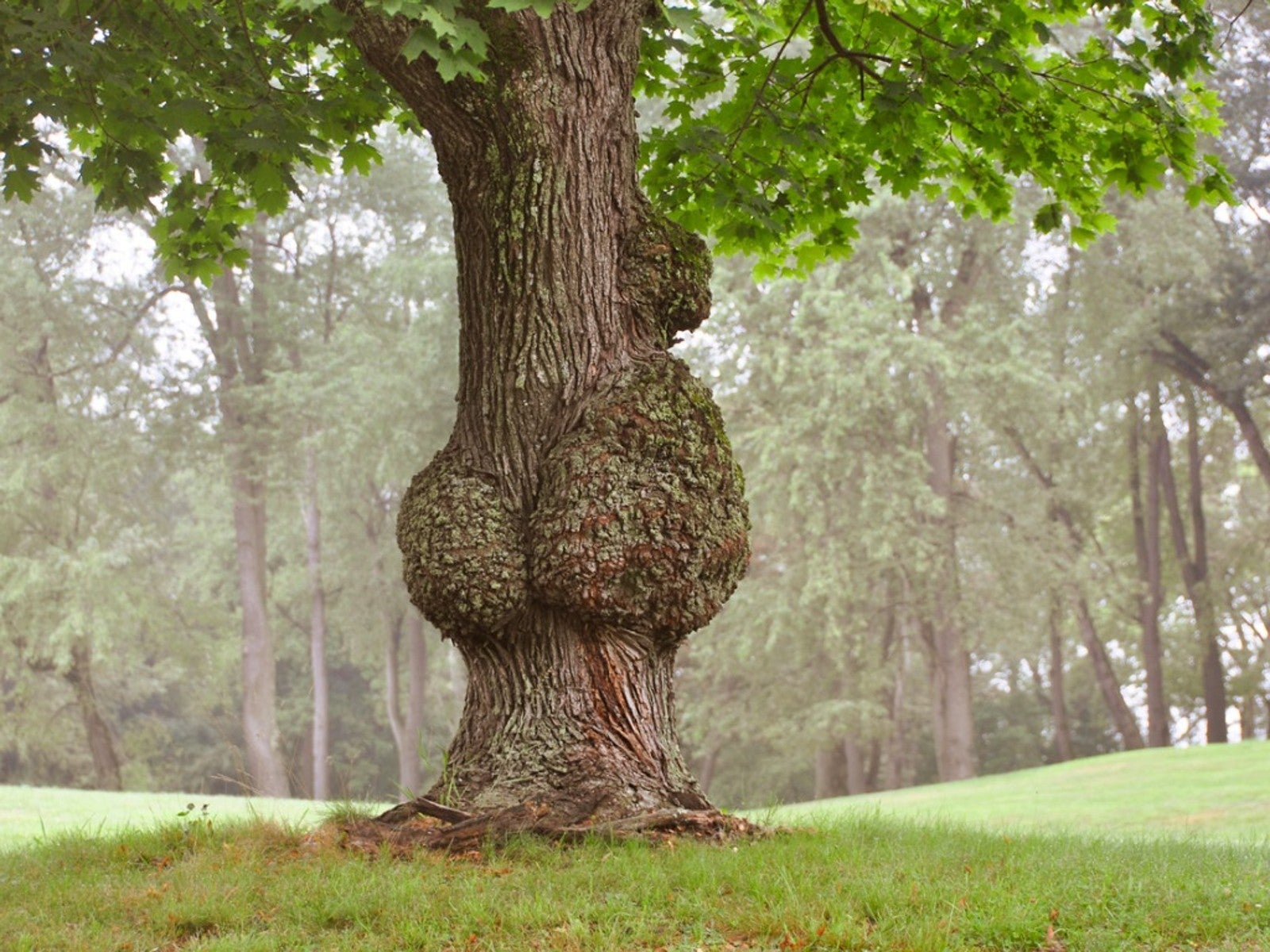Learn About Tree Burls And What Causes Them


Have you ever admired the bumps or bulges growing from a tree trunk and wondered whether they were hurting the tree? The good news is that experts can’t find any evidence that a tree burl has any detrimental effect on the tree. What is a burl? What causes burls on trees? Read on to get more information on burls.
What is a Burl?
If you are wondering about tree burls, the best way to define them is as bumps, swellings, or bulges that grow on or from the trunk of a tree. Tree burls are not always smooth. The burl of a tree can be bumpy with a cauliflower texture, or it can appear in a donut shape, circling the base of a branch. The interior burl wood forms swirls that are particularly lovely. They are sought after by woodworkers.
Don’t mistake a burl for a gall. These are two very different things. Galls are fairly small and form along twigs and leaves. Burls are much larger and are found on major branches or trunks. Burls are a part of the tree itself, while galls grow outside and independent from the tree.
What Causes Burls on Trees?
If you are wondering what causes burls on trees, you are not alone. Experts have not pinpointed a cause. It is generally known that tree burls form when bud growth cells develop abnormally. As the cells divide, they create a rounded shape rather than a normal tree branch. They divide in an abnormal way. As these dormant cells start dividing in many directions, they end up creating a rounded shape rather than forming the tree limb, which they originally intended to grow.
Possible Stressors
What causes the cells to develop abnormally? Scientists don’t really have an answer. Many believe that the cells develop abnormally due to some stress the tree has suffered. However, the type of stress is as yet unidentified. Some of the suspects include bacteria, fungi, viruses, mechanical wounds, fire damage, or a combination of any of these factors.
Since burls don’t harm trees, the fact that the exact cause of a burl remains a mystery is not serious. There is no reason to cut off that burl. In fact, leave it alone! Removing it might kill the tree.
Gardening tips, videos, info and more delivered right to your inbox!
Sign up for the Gardening Know How newsletter today and receive a free copy of our e-book "How to Grow Delicious Tomatoes".

Teo Spengler is a master gardener and a docent at the San Francisco Botanical Garden, where she hosts public tours. She has studied horticulture and written about nature, trees, plants, and gardening for more than two decades. Her extended family includes some 30 houseplants and hundreds of outdoor plants, including 250 trees, which are her main passion. Spengler currently splits her life between San Francisco and the French Basque Country, though she was raised in Alaska, giving her experience of gardening in a range of climates.
-
 Terrifically Tubular Flowers For Hummingbirds: 9 Tube-Flowered Plants To Attract Hummers
Terrifically Tubular Flowers For Hummingbirds: 9 Tube-Flowered Plants To Attract HummersGrowing tubular flowers for hummingbirds helps you create the optimum feeding conditions for your winged friends. Here are nine tubed delights for hummers
By Tonya Barnett
-
 How To Grow Hydroponic Tomatoes For Fresh Indoor Harvests – No Soil Required
How To Grow Hydroponic Tomatoes For Fresh Indoor Harvests – No Soil RequiredLearning how to grow tomatoes in water is easy and allows you to harvest fresh-home-grown produce in every season without any mess.
By Ellen Wells
-
 Best Trees For Carbon Sequestration And Climate Change
Best Trees For Carbon Sequestration And Climate ChangeLet’s keep planting trees. They are our best bet for capturing carbon and may help with our global warming issues.
By Teo Spengler
-
 7 Invasive Trees You Should Never Plant In Your Yard Or Garden
7 Invasive Trees You Should Never Plant In Your Yard Or GardenWhat are some invasive trees you should never plant in your yard? Click here to find out.
By Teo Spengler
-
 How Close Can You Plant A Tree To A Stump?
How Close Can You Plant A Tree To A Stump?Looking to plant new trees near old stumps or where stumps have been removed? Click here to learn how.
By Teo Spengler
-
 Messiest Trees That Drop Debris Everywhere
Messiest Trees That Drop Debris EverywhereWant to know which trees will create the biggest messes in your home landscape? Click here to find out.
By Amy Grant
-
 How To Get Rid Of Tree Sprouts In The Yard From Nearby Trees
How To Get Rid Of Tree Sprouts In The Yard From Nearby TreesLearn the simple way to keep pesky tree seedlings in your lawn from becoming saplings.
By Teo Spengler
-
 How To Tell How Old A Tree Is
How To Tell How Old A Tree IsEver wondered how to calculate the age of a tree? Click here to learn all about it.
By Teo Spengler
-
 When To Remove Tree Stakes From Saplings
When To Remove Tree Stakes From SaplingsA newly planted tree may grow strong when it’s staked, but don’t forget to remove the stakes when it’s stable.
By Teo Spengler
-
 Inosculation And Trees Growing Together
Inosculation And Trees Growing TogetherIf you ever see two trees that have bonded and grown together, read here to learn why and how it happens.
By Teo Spengler